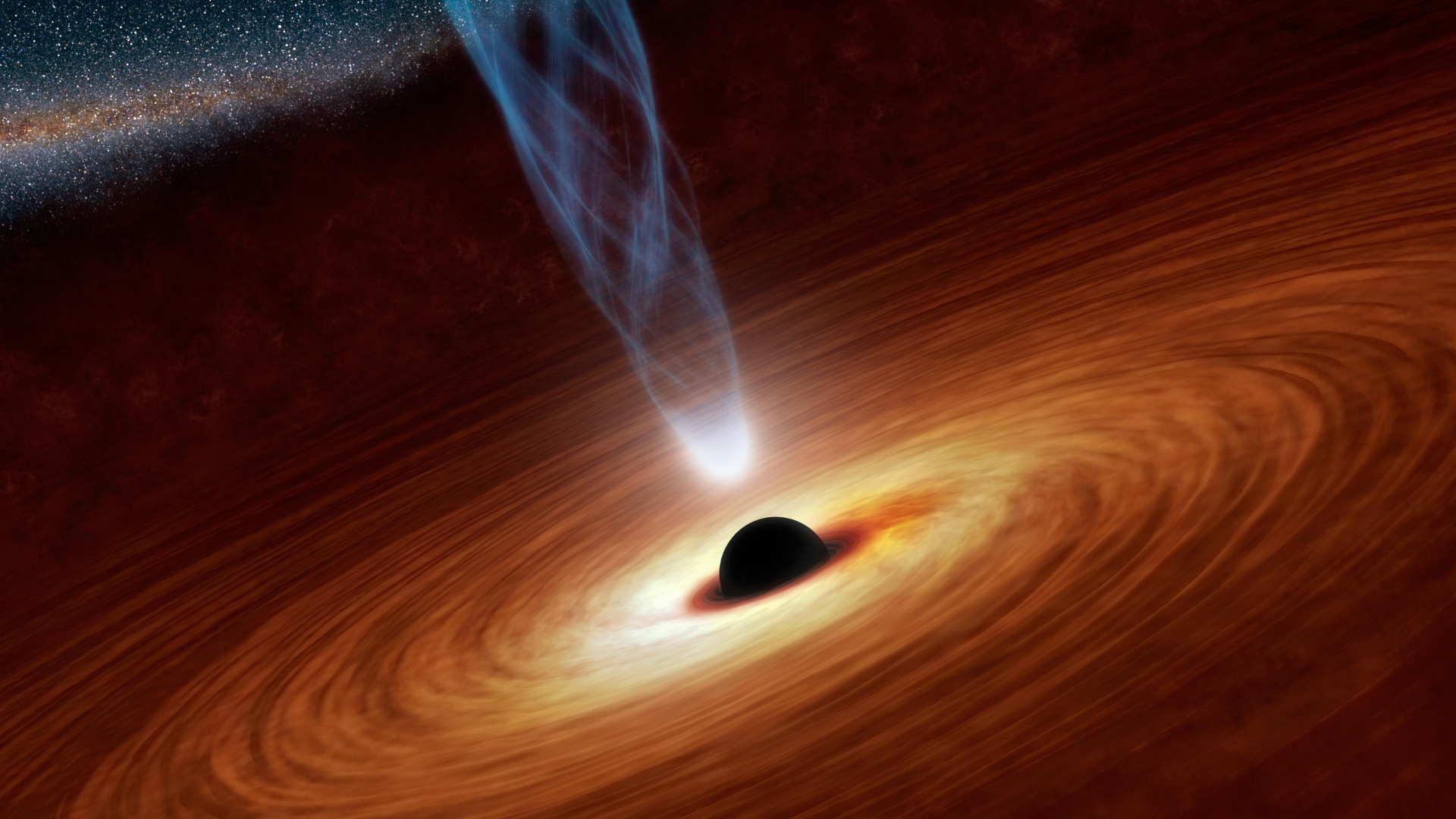Dark matter remains one of the most fascinating enigmas in the universe. Although it composes approximately 27% of the total mass-energy content, its presence is inferred primarily through its gravitational effects rather than direct observation. The mysteries of dark matter lie in its ability to influence galaxies and their movement, highlighting its crucial role in the structure of the universe.
Scientists have yet to identify what dark matter actually is, but its effects are evident in the way galaxies rotate and cluster. This unseen mass provides the gravity necessary to hold galaxies together, preventing them from flying apart and offering insight into the overall behaviour of the cosmos. Exploring dark matter invites questions about fundamental physics and the very fabric of reality itself.
As researchers strive to unlock the secrets of dark matter, they delve into theories ranging from particle physics to cosmology. Understanding it could revolutionise our grasp of the universe, potentially revealing new aspects of gravity and mass. The quest to uncover the nature of dark matter is not just crucial for astrophysics; it may define the future of scientific exploration.
Conceptual Overview of Dark Matter
Dark matter is a crucial yet elusive component of the universe, influencing cosmic structures and behaviour. Understanding its properties and historical context reveals its significance in modern astrophysics.
Defining Dark Matter and Its Significance
Dark matter is a form of matter that does not emit, absorb, or reflect light, making it invisible. It is believed to constitute about 27% of the universe’s mass-energy content, significantly impacting the formation of galaxies and large-scale structures.
The presence of dark matter is inferred through gravitational effects on visible matter. For example, galaxies rotate at such speeds that the visible mass alone cannot account for their gravitational binding. This has led to theories suggesting that dark matter provides the necessary gravitational pull to hold galaxies together.
Historical Context and Discovery
The concept of dark matter emerged in the early 20th century, starting with the work of astronomers like Fritz Zwicky. He observed that galaxies within galaxy clusters moved faster than expected, indicating unseen mass. This was the first clue pointing toward dark matter.
Later, in the 1970s, Vera Rubin’s observations of spiral galaxies reinforced this idea. She found that stars in galaxies maintained high orbital speeds, contradicting predictions based on visible mass alone.
These discoveries paved the way for further research into dark matter, leading to theories that connect it with the cosmic microwave background and the universe’s expansion. Understanding dark matter remains one of the foremost challenges in cosmology today.
The Role of Dark Matter in the Cosmos
Dark matter plays a crucial role in shaping the universe. It contributes to the structure of galaxies, influences cosmic expansion, and interacts with regular matter in significant ways.
Dark Matter and the Structure of Galaxies
Dark matter acts as a scaffold for galaxies, providing the necessary gravitational pull that holds them together. In spiral galaxies like the Milky Way, dark matter forms a halo that extends beyond the visible components. This halo explains the rotation curves of galaxies, which reveal that stars in the outer regions rotate faster than expected based on visible mass alone.
Galaxy clusters also rely heavily on dark matter. The mass of the cluster includes gravitational effects from both visible and dark matter. The presence of dark matter leads to the formation and stability of these massive structures.
Influence on Cosmic Expansion and Acceleration
Dark matter contributes to cosmic acceleration, which describes the increased rate of the universe’s expansion. Observations, particularly from distant supernovae, indicate that the universe is not only expanding but doing so at an accelerating rate.
This acceleration is thought to be driven by a combination of dark matter and dark energy. While dark energy’s role primarily involves pushing galaxies apart, dark matter provides the gravitational pull necessary to counterbalance expansion on smaller scales, influencing galaxy formation and clustering.
Interactions with Baryonic Matter
Dark matter interacts with baryonic matter through gravity, affecting star formation and the evolution of galaxies. Although dark matter is invisible and does not emit light, its gravitational influence shapes the distribution and amount of baryonic matter available for star formation.
In areas where dark matter concentration is high, such as in galaxy clusters, regions of baryonic matter can become densified, leading to increased star formation. This interaction is critical in understanding how galaxies evolve over time and the formation of structures within the cosmos.
Detecting and Studying Dark Matter
Detecting and studying dark matter presents significant challenges due to its elusive nature. Researchers employ various strategies, including direct detection experiments, indirect observations through astrophysical phenomena, and advanced research facilities equipped with sophisticated instruments.
Direct Detection Experiments
Direct detection experiments aim to observe dark matter particles interacting with regular matter. Weakly Interacting Massive Particles (WIMPS) are a primary focus. These experiments typically use sensitive detectors located deep underground to minimise background noise.
Common methodologies include using liquid xenon or germanium crystals. When a WIMP collides with a nucleus, it produces detectable signals, such as ionisation or scintillation light. Notable projects include the LUX-ZEPLIN and XENON collaborations, which seek to uncover the presence of low-mass dark matter and potentially identify WIMP candidates.
Indirect Detection through Astrophysical Observations
Indirect detection involves analysing cosmic rays, neutrinos, and gamma rays resulting from dark matter annihilation. When dark matter particles collide, they can produce standard particles like positrons and photons. These annihilation products may indicate the presence of dark matter in specific regions, like the Galactic Centre or dwarf galaxies.
Instruments such as the Alpha Magnetic Spectrometer and the Dark Energy Survey are crucial for these observations. They help measure cosmic ray flux and search for anomalies that suggest dark matter interactions. Analysing these results contributes to the broader understanding of dark matter’s role in cosmic evolution.
Current Research Facilities and Instruments
Several research facilities and instruments are pivotal in the quest to detect dark matter. For instance, Fermilab hosts multiple experiments, focusing on producing and observing dark matter candidates. The Dark Energy Spectroscopic Instrument (DESI) is crucial for studying the universe’s expansion and uncovering potential dark matter signatures.
Additionally, the Large Synoptic Survey Telescope (LSST) will enable extensive surveys of the night sky, identifying transient events that might signify dark matter interactions. These facilities and instruments collectively enhance our understanding of dark matter and its influence on cosmic structures.
Challenges and Future Directions in Dark Matter Research
Dark matter research faces significant challenges that require innovative approaches. Key areas include unresolved questions about its fundamental nature, the interplay between dark matter and dark energy, and the necessity for advanced technology to enhance detection capabilities.
Fundamental Questions and Controversies
The nature of dark matter remains one of the most pressing scientific questions. Currently, weakly interacting massive particles (WIMPS) are a leading candidate, yet experiments have so far failed to detect them directly. This absence of evidence has led to debates among researchers.
Some propose alternative theories, such as modified gravity or primordial black holes. These controversies emphasise the need for a clearer understanding of dark matter’s role in cosmic structure.
Another significant question involves the relationship between dark matter and the cosmic microwave background (CMB). Observations of the CMB can provide indirect evidence of dark matter’s properties, yet interpretations vary.
The Synergy of Dark Matter and Dark Energy Studies
Dark matter and dark energy studies are increasingly interconnected. Dark energy, responsible for the universe’s accelerated expansion, may interact with dark matter in unknown ways. Understanding this relationship could unveil new insights into both phenomena.
Collaborative efforts in research aim to explore these connections. Observations from telescopes and satellites can yield valuable data. For instance, gravitational lensing studies help visualise dark matter’s influence on light from distant galaxies.
Research initiatives are also focusing on how the behavior of WIMPs may be influenced by dark energy, inviting cross-disciplinary collaboration to tackle these complex challenges.
Technological Advancements and Upcoming Missions
Advancements in technology are crucial for progressing dark matter research. Future missions aim to enhance detection methods. Improved detectors designed to capture WIMPS are in development, utilising advanced materials and techniques.
Upcoming missions, such as the European Space Agency’s Euclid and the NASA-led Roman Space Telescope, will gather data on cosmic structures. These instruments will provide new insights into the distribution of dark matter.
Additionally, underground laboratories are being optimised for sensitivity, enabling more refined experiments. This technological revolution may close the gap in understanding dark matter and its implications for the universe.




